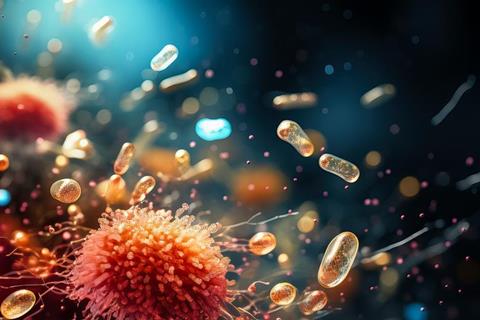A team of Canadian scientists has discovered a surprising new way to improve blood sugar levels and reduce liver damage: by trapping a little-known fuel made by gut bacteria before they wreak havoc on the body.

The findings, published in Cell Metabolism on July 29, 2025, could open the door to new therapies to treat metabolic diseases like type 2 diabetes and fatty liver disease.
READ MORE: Gut bacteria and acetate offer a great combination for weight loss
READ MORE: What microbes tell us about Nonalcoholic Fatty Liver Disease
Researchers at McMaster University, Université Laval and the University of Ottawa showed that a molecule produced by microbes in the gut can sneak into the bloodstream and fuel the liver to make more glucose and fat than necessary. But when researchers developed a way to trap this molecule in the gut before it enters the body, they saw dramatic improvements in blood sugar control and fatty liver disease in mice with obesity.
“This is a new twist on a classic metabolic pathway,” says Jonathan Schertzer, senior and corresponding author and professor in the Department of Biochemistry and Biomedical Sciences at McMaster. “We’ve known for nearly a century that muscles and the liver exchange lactate and glucose — a process called the Cori cycle. What we’ve discovered is a new branch of that cycle, where gut bacteria are also part of the conversation.”
Cori cycle
In 1947, married scientists Carl Ferdinand Cori and Gerty Theresa Cori were awarded the Nobel Prize in Physiology or Medicine for their work showing how muscles in the body generate lactate that fuels the liver to produce blood glucose, which then cycles back to fuel the muscle. The work laid the foundation to explain how muscles use a form of lactate (L-lactate), and the liver uses blood glucose, to communicate and exchange fuel with each other.
The Canadian team found that obese mice — and even people with obesity — have higher levels of a lesser-known molecule, D-lactate, in their blood. Unlike the more familiar L-lactate made by muscles, most of the D-lactate comes from gut microbes and was shown to raise blood sugar and liver fat more aggressively.
To stop this, the researchers created a “gut substrate trap” — a safe, biodegradable polymer that binds to D-lactate in the gut and prevents it from being absorbed. Mice fed this trap had lower blood glucose, less insulin resistance, and reduced liver inflammation and fibrosis — all without changing their diet or body weight.
Intercepting the source
“This is a completely new way to think about treating metabolic diseases like type 2 diabetes and fatty liver disease. Instead of targeting hormones or the liver directly, we’re intercepting a microbial fuel source before it can do harm,” says Schertzer, a member of the Centre for Metabolism, Obesity, and Diabetes Research (MODR) and Farncombe Family Digestive Health Research Institute at McMaster. Schertzer holds a Canada Research Chair in Metabolic Inflammation.
The research, funded by the Canadian Institutes of Health Research (CIHR), highlights the growing importance of the microbiome in chronic diseases.







No comments yet